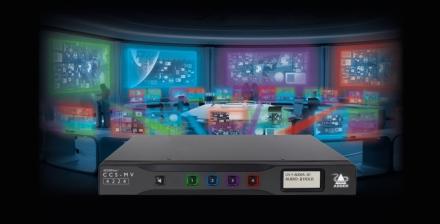Want to know more about KVM and what it can do for you? Click Here
Blogs 24 June 2022
Planning for the Future of the Control Room: Airport 4.0

A world-first
In April 2021, London City became the world’s first airport to be fully controlled remotely, with the air traffic control (ATC) operations moving 90 miles - from London’s Docklands to Swanwick in Hampshire - where a team of controllers are based. It’s a highly important development, not just in the ATC industry, but across a variety of key sectors, especially where existing operations put the teams close to potential hazards or safety risks. The set-up is based around recreating the on-site tower at London City by using 14 high-definition cameras that capture every movement and relay them through superfast, ultra-reliable, ultra-secure fiber networks back to Swanwick. Subsequently displayed across an array of 14 monitors, it replicates the window view within the previous tower.
Enhancing the experience
The digital re-enactment of the tower doesn’t change the fundamental manner of the controller’s role – it’s still visual-based, with the same set-up as before. Indeed, many features arguably enhance the experience significantly; the ability to zoom in 30x allows for up-close inspection not previously possible being just one; the ability to overlay live images with data being another. But seismic changes, by their very nature, bring fresh challenges. In the instance of London City, these challenges are heavily weighted on the scale of data generated and how it is remotely managed back in the digital ATC room. Delays in information coming back to central operations simply can’t happen – one reason why a superfast fiber connection is being used to link the sites. But this pinpoint synchronicity is needed beyond just delivery; it must be brought together and stitched or analyzed as one.
Visual collaboration
In order for teams to collaborate and make critical decisions, they all need to be looking at the same data, and observe the same insight being revealed by it. Highly detailed visualizations of data allow clarity of thinking, so having a centralized point – such as an IP KVM switch – at the core, ensures that data is used as intuitively, immediately, and reliably as possible. This is especially key when considering the overlay that is being put into effect on top of the video walls. London City is a prime example of how ‘Airport 4.0’ is developing. A multitude of devices and endpoints across airports (and accompanying operational sites), are bringing increased safety, security, and understanding of whole sites. They’re becoming increasingly sophisticated digital hubs, bringing systems into line and moving away from paper-based or manual systems.
Migrating to Airport 4.0
This has never been more important than right now, with the aviation industry struggling back to its feet in the aftermath of the pandemic. With many sites still carrying legacy infrastructure such as older cabling and non-5G Wi-Fi, a wholesale migration to private wireless networks will take time. But as new solutions come to the fore, and new devices – such as drones, thermal imaging, extra security cameras – come into the airport network, aggregating these all into a single control room becomes key. Putting IP KVM at the heart of this will tackle challenges of interoperability, while also increasing reliability and consistency of data – without compromising security. As London City has shown, the future of the aviation sector lies in digitalization. But it needs technological infrastructure to allow devices, networks, and innovation to flourish.
To find out more about how KVM can facilitate change and fuse new technologies in your control room, download Adder’s latest whitepaper.





